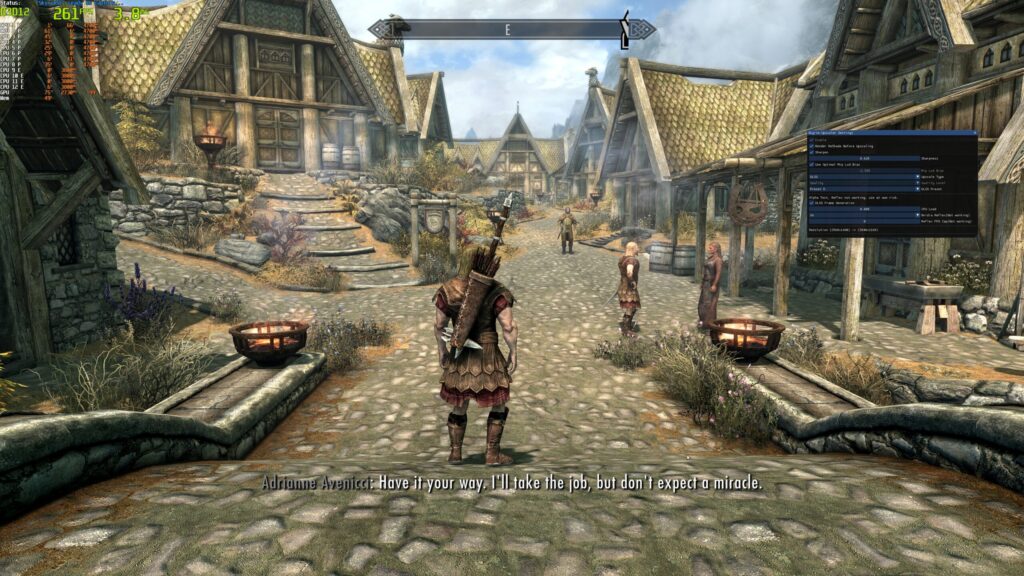Takeaway: The Power of Narrative in 3D Game Development
In the realm of 3D game development, the significance of great text cannot be overstated. A compelling narrative not only enhances player engagement but also drives innovation within the studio. This article delves into the intricate relationship between text and gameplay, exploring how well-crafted narratives can elevate the gaming experience and foster creativity in development teams.
The Role of Narrative in Game Design
At its core, a video game is an interactive medium that combines storytelling with gameplay mechanics. The narrative serves as the backbone of the game, providing context, motivation, and emotional depth. According to a study by the International Game Developers Association (IGDA) in 2021, 75% of players consider a strong narrative to be a critical factor in their enjoyment of a game (source: IGDA, 2021). This statistic underscores the importance of integrating great text into the design process.
Creating Immersive Worlds
Great text is essential for world-building, which is a fundamental aspect of 3D games. A well-written narrative allows developers to create immersive environments that resonate with players. For instance, the lore of a game can provide historical context, cultural depth, and a sense of place that enhances the player’s experience. Games like “The Elder Scrolls V: Skyrim” and “The Witcher 3: Wild Hunt” exemplify how rich narratives can create expansive worlds that players are eager to explore.

Above, The Elder Scrolls V: Skyrim as an example of strong storytelling.
Character Development and Player Connection
Character development is another area where great text shines. Players are more likely to connect with characters that have well-defined personalities, motivations, and arcs. Textual elements such as dialogue, internal monologues, and backstories contribute to this development. For example, in “The Last of Us,” the relationship between Joel and Ellie is intricately woven through dialogue and narrative choices, making their journey emotionally impactful. This connection not only enhances player engagement but also encourages players to invest time and effort into the game.

Joel and Ellie’s bond deepens through impactful dialogue.
Enhancing Gameplay Mechanics
Great text can also influence gameplay mechanics. Narrative-driven gameplay often incorporates choices that affect the story’s outcome, leading to multiple endings or branching paths. This interactivity encourages players to engage with the narrative on a deeper level. Games like “Detroit: Become Human” utilize branching narratives to create a sense of agency, allowing players to shape the story through their decisions. This approach not only enhances replayability but also fosters innovation in game design, as developers must create complex systems that accommodate various narrative outcomes.
Dialogue Systems and Player Agency
Dialogue systems are a critical component of narrative-driven games. They allow players to interact with characters and influence the story through their choices. A well-designed dialogue system can enhance immersion and player agency, making the narrative feel more personal. For instance, “Mass Effect” employs a dialogue wheel that enables players to choose responses that align with their character’s personality, affecting relationships and story progression. This level of interactivity encourages players to think critically about their choices, leading to a more engaging experience.
Fostering Innovation in Game Development
Integrating great text into the game development process can also foster innovation within the studio. When writers and developers collaborate closely, they can create unique gameplay experiences that push the boundaries of traditional game design. This collaboration can lead to innovative storytelling techniques, such as environmental storytelling, where the narrative is conveyed through the game world itself rather than through explicit text or dialogue.
Environmental Storytelling
Environmental storytelling is a technique that allows players to piece together the narrative through their exploration of the game world. This approach can be seen in titles like “Dark Souls,” where the lore is embedded in item descriptions, architecture, and environmental cues. By encouraging players to engage with the world on a deeper level, developers can create a more immersive experience that rewards curiosity and exploration.
Collaborative Storytelling
Another innovative approach is collaborative storytelling, where players contribute to the narrative through their actions and decisions. This technique can be seen in games like “Journey,” where players interact with one another in a shared world, creating a unique narrative experience for each player. By embracing collaborative storytelling, developers can create dynamic narratives that evolve based on player interactions, leading to a more engaging and personalized experience.
Challenges and Considerations
While the integration of great text into 3D game development offers numerous benefits, it also presents challenges. One of the primary challenges is balancing narrative depth with gameplay mechanics. Developers must ensure that the narrative enhances the gameplay experience rather than detracting from it. This requires careful planning and collaboration between writers and designers to create a cohesive experience.
Maintaining Player Engagement
Another consideration is maintaining player engagement throughout the narrative. Players may lose interest if the story becomes convoluted or if the pacing is inconsistent. To address this, developers should focus on creating a clear narrative structure that guides players through the story while allowing for exploration and discovery. Additionally, incorporating player feedback during the development process can help identify areas where the narrative may need refinement.
Conclusion: The Future of Narrative in 3D Game Development
In conclusion, great text is a vital component of successful 3D game development. By prioritizing narrative, developers can create immersive worlds, foster player connections, and enhance gameplay mechanics. Furthermore, integrating great text into the development process can drive innovation within the studio, leading to unique storytelling techniques and collaborative experiences. As the gaming industry continues to evolve, the importance of narrative will only grow, making it essential for developers to embrace the power of great text in their projects.
Key Takeaways:
- Great text enhances player engagement and drives innovation.
- Strong narratives contribute to immersive world-building and character development.
- Dialogue systems and player agency are crucial for interactive storytelling.
- Environmental and collaborative storytelling techniques foster innovation.
- Balancing narrative depth with gameplay mechanics is essential for maintaining player interest.

